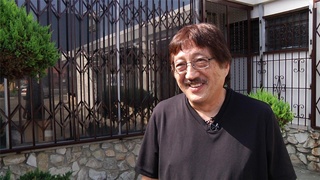Interviews
Postwar school-life
At the end of the war…right away we got more accepted because there were more kids from Oklahoma and the Mexicans were coming in more so there wasn’t just the white basic—that was gone. So that made it easier. Also I wasn’t one of these kids who wanted to be everything. I would take leadership positions. I started with one teacher a drama club and wrote plays and worked with younger kids and I actually had the nerve to go to the city and say that I’ll do a summer work with kids and did plays with them. I did a lot of things I think took a lot of nerve but somehow I just…I don’t know I had to make myself over people to accept myself that I was better than them. I know it sounds kind of nasty when you put it down but somehow I was able to do that.
Date: August 27, 2012
Location: Washington, US
Interviewer: Cindy Nakashima, Emily Anderson
Contributed by: Watase Media Arts Center, Japanese American National Museum with support of NITTO Tires Life History Project. Courtesy of the USC Hapa Japan Database Project.
Explore More Videos





Fifty Years and Going Strong
(1938-2020) Japanese American attorney and civil rights activist

On Challenging Institutions
(1938-2020) Japanese American attorney and civil rights activist

Pop and Balls
(1938-2020) Japanese American attorney and civil rights activist

Re-examining Identity
(1941-2018) Japanese Canadian photojournalist and activist



Conflicted about immigrating to America (Japanese)
(b. 1925) War bride


Defining "Nikkei"
(1941-2018) Japanese Canadian photojournalist and activist

After being discharged and returning to the nursery business
(b. 1921) Nisei veteran who served in the occupation of Japan

The difference between Nikkei community in Oizumi and Brazil (Japanese)
(b. 1979) Sansei Nikkei Brazilian who lives in Oizumi-machi in Gunma prefecture. He runs his own design studio.
